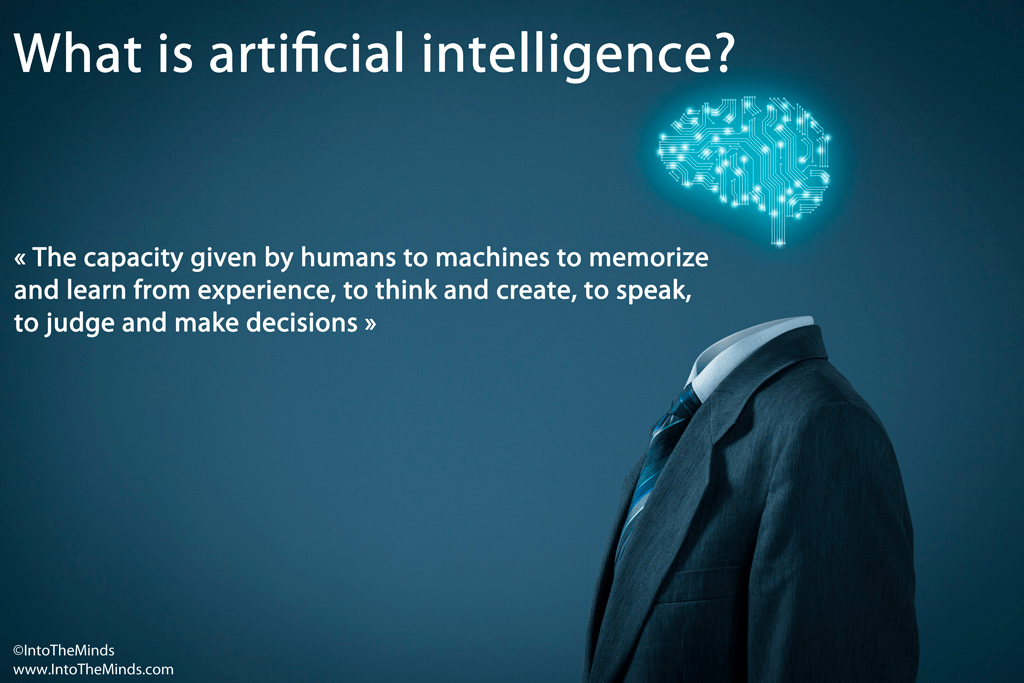The Rise of Artificial Intelligence in Cybersecurity: the Benefits and Drawbacks
Cybersecurity is fast becoming a key talking point in business due to the prominence of cloud applications and remote work in many organizations. Both workplace systems require online environments and mobile apps for business, leaving enterprises potentially prone to data hacks and breaches.
Businesses are reacting by leveraging advanced cybersecurity solutions, including Robotic Process Automation (RPA), privacy tech, and artificial intelligence (AI) to mitigate cybersecurity attacks. Tools that control access to sensitive data and systems are critical. The linked article on what is secrets management explains more.
A recent Capgemini survey says up to 80% of telecom businesses leverage AI for cybersecurity. That number is 75% in the banking sector. These companies are using AI to predict cyberattacks, improve security frameworks and mitigate the impact of any hacks on existing company infrastructure.
But what are the long-term implications of AI’s prevalence in the cybersecurity industry? This blog explores the pros and cons of deploying AI as part of company-wide cybersecurity measures.
Alt text: Image defining what artificial intelligence is
Benefits of Artificial Intelligence in Cybersecurity
Artificial intelligence defines the ability of any computing system to reason, analyze new information and mimic human intelligence. The human-like intelligence that defines AI is why this tech has become crucial to the average digital company’s cybersecurity setup.
Meticulous Research’s recent AI report states the influence of AI in cybersecurity should reach $66.22 billion by 2029. Here’s why:
Artificial Intelligence can Handle Big Data
Finding and defusing cybersecurity threats before they happen requires special attention to big data. Unfortunately, these data sets are often immense. So much so that deploying a workforce for monitoring and analysis procedures using data warehouse tools can prove ineffective.
Companies can leverage AI principles to develop cybersecurity automation systems that manage big data. For example, a comprehensive AI system can skim big data packs, analyzing and spotting trends with a view to isolating possible threats before they happen.
AI-backed automated processes simplify cybersecurity event analysis, even during chaotic company-wide events.
Prevent Phishing and Email Scams
Hackers often attack companies by targeting their staff through phishing scams. Phishing scams describe hackers manipulating employees to click on malicious links disguised as company websites or other popular websites like PayPal, Facebook, and password managers.
Artificial intelligence can help your employees stay ahead of possible threats by recognizing questionable sources and sending appropriate alerts. This cybersecurity benefit works similarly to Google’s algorithms for warning email users about suspicious messages.
Alt text: Infographic showing the benefits of AI in cybersecurity, including the fast detection and prevention of online fraud
Easier to Nullify Unknown Threats
Handling cybersecurity without AI means you’re relying completely on human intellect. And there’s only so much malware a seasoned cybersecurity pro can recognize on the fly. Plus, numbers from a recent Cloudian Report indicate hackers develop and launch millions of ransomware programs every day.
Artificial Intelligence in cybersecurity mitigates the threat of data breaches due to unknown malicious programs. Automated AI programs can use network changes to identify new, previously undiscovered cyber threats.
Hackers today specialize in devising new types of cyber threats and making them less detectable. They use methods like crypto jacking, malware attacks on smartphones, and cross-site scripting to breach data networks.
However, since AI-powered cybersecurity systems identify unknown, suspicious system changes by default, they’re a great ally for companies in the unending battle against cybersecurity threats.
Real-Time Cyber Security Solutions
Hackers don’t keep regular 9-5 hours. Instead, they work from different time zones and can launch threats at any time. Consequently, real-time, round-the-clock monitoring is vital to detecting and neutralizing security breaches.
However, it’s near impossible to rely on 24/7 human intervention. Even when you have a cloud collaboration platform and other requisite resources for 24/7 infrastructure supervision, there’s still the human propensity for making mistakes that comes with monotonous tasks.
It’s better to leverage AI-powered cybersecurity solutions. In addition, these cybersecurity solutions can come from third-party services, allowing you to save money on extra workforce shifts and company resources.
AI cybersecurity systems offer advanced diagnostic capabilities with minimal human intervention. This characteristic gives team leads and business managers the leeway to allocate human resources and capital to more productive efforts.
Finally, AI-backed cybersecurity applications can perform diagnostics and detect threats in real-time. With that task out of the way, your cybersecurity team can spend their productive time reviewing the legitimacy of any discovered threats or fast-tracking lost data recovery.
AI Algorithms Are Always Learning
AI cybersecurity programs can learn through machine and deep learning principles. This characteristic means they can recognize patterns, predict expected changes and find causalities in company IT infrastructure.
And after identifying each causality, the algorithm can group them, allowing it to find and eliminate threats with similar traits in the future.
Machine learning capabilities allow AI systems to understand and become familiar with company traffic — regardless of industry. For example, AI can quickly learn the ropes in the banking or finance sector. There are even applications for modernizing legacy systems in the insurance sector to help reduce security risks from old software..
Furthermore, machine learning means AI can spot anomalies faster and quickly send alerts to designated personnel. Your IT team can then work on identified threats remotely using encrypted video conferencing tools. By doing so, machine learning algorithms assist IT security experts in spotting and mitigating risks.
Alt text: Infographic detailing the opportunities machine learning offer including image, voice and optical character recognition and data analysis
Eliminates Duplicate Processes
The procedure for detecting potential cyber threats is repetitive and duplicative. But with artificial intelligence, companies can save time otherwise spent analyzing thousands of data sets. Instead, your IT team can focus productive resources on enhancing defensive AI systems or learning more about new threats.
The Drawbacks of Artificial Intelligence in Cybersecurity
On the flip side, downsides exist to using artificial intelligence in cybersecurity. They include the following:
Cybercriminals Also Use AI
There’s no monopoly on AI knowledge. As your IT team is looking to protect company assets with AI, the other side can also deploy the tech for their nefarious intentions. For example, cybercriminals can use VPNs to obtain AI-backed cybersecurity programs anonymously and reverse engineer them to create malicious AI-proof malware.
This scenario is even more widespread thanks to the ever-reducing costs of AI software development. As a result, hackers can create faster, more accurate, and more destructive hacking software. These malware programs use machine learning to increase threat precision and to identify attack points on any network.
Today, cybercriminals can use machine learning principles to understand how AI-based cyber security works. They take the time to understand how these programs identify and prevent cyber threats before using this info to design potent malware that appears harmless.
By doing so, hackers can trick IT security experts into ignoring what is perceived as a “harmless threat”. Your security experts will focus on seemingly more dangerous threats while cleverly disguised malware is breaching proprietary data.
Instances of Hackers Using AI
A good example of hackers leveraging AI capabilities is via fuzzing, an analytical technique designed to find vulnerabilities in software programs. This technique overloads the target system with malicious data designed to cause sudden crashes, memory errors, buffer overflows, and highlight weaknesses.
In combination with artificial intelligence, fuzzing transforms into a severe cyber threat. Hackers can easily obtain insights into a system’s weakness thanks to AI’s ability to sift through immense data sets.
Another illustration of hackers using AI is via phishing attacks. AI-backed phishing technology can skim sensitive data, extracting only critical information. This maneuver allows phishing attacks to reduce their imprint and traffic, making malware significantly harder to detect.
Alt text: Illustration of a cyber hacker
Artificial Intelligence is Cost-Intensive
Artificial intelligence remains a relatively new niche. And while the cost of deploying AI is reducing, it’s still on the high side for many startups.
Furthermore, AI works alongside big data and data science principles, two other relatively new fields. And because both fields are relatively new, finding and hiring full-time experts to manage AI systems can be expensive.
Unemployment
AI in cybersecurity is largely automated. These systems can work in real-time without human influence. So naturally, this scenario spells unemployment issues for the country’s workforce.
Digital companies no longer need to pay full-time staff to test networks, find threats and prevent them. Instead, these companies can rely on AI to do the job without worrying about operating costs.
Cyber Threat Evolution
Leaving AI systems and protocols without periodic updates is a cloud security mistake to avoid.
Hackers are immensely creative and often create updated tweaks to confuse AI programs. Without ensuring access to these updates, you may be leaving your AI system vulnerable to pre-planned attacks.
Artificial intelligence protocols in cybersecurity can handle large data sets and spot lurking threats. But the system isn’t an official non-disclosure agreement template that you set up and forget. Instead, there is an active need for enhancements and updates to any AI cybersecurity system.
Artificial intelligence solutions in cybersecurity go through rigorous research before they become publicly accessible. Researchers even release journals and make their work open source to ensure access to every user. Unfortunately, this access includes hackers who can use this info to update and prepare their malware for attacks.
AI Can Be a Plus for Cybersecurity
Artificial intelligence can boost enterprise cybersecurity thanks to automation, accurate threat detection, and zero burnout. That’s not to say human intervention is unnecessary, as the downsides above indicate.
In cybersecurity, enterprises need to find a balance where AI tech and the human touch work in tandem. For example, a cybersecurity team can complement an artificial intelligence system. Similarly, the AI system can improve the team’s performance, finding security vulnerabilities and helping IT experts stay ahead of hackers.
Bio:
Grace Lau – Director of Growth Content, Dialpad
Grace Lau is the Director of Growth Content at Dialpad, an AI-powered cloud communication platform for better and easier team collaboration. She has over 10 years of experience in content writing and strategy. Currently, she is responsible for leading branded and editorial content strategies, partnering with SEO and Ops teams to build and nurture content. Grace has also written for other domains such as WebSitePulse and WITI. Here is her LinkedIn.
Headshot:Image



